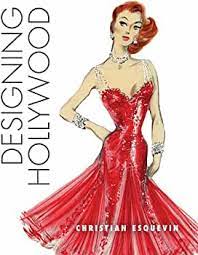Universal Studios has the longest history of the Hollywood studios. It was founded in 1912 in New York by Carl Laemmle and other partners. Like many other film companies, it moved west. By the end of 1912 Universal was in Hollywood and by 1915 it opened its 230 acre Universal City Studio, the largest film production studio in the world. It was actually a movie “theme park” in 1915 through the silent era when it had public seating for viewing of films being made. Since the movies were silent, any cheering for favorite stars (or booing for villains) did not matter since none of this interfered with the filming (or apparently the actors).


Vera West is recorded as one of the first Universal costume designers in 1926. At that time the old 1915 studio buildings made way for some new buildings including a new Wardrobe building in 1926. in these early years Universal made its biggest hits with off-beat characters. In 1923 came The Hunchback of Notre Dame starring Lon Chaney, Then it was Phantom of the Opera in 1925, again with Lon Chaney starring. The box-office success of these two films led to even bigger hits with Universal’s famed monster classics: Dracula, with Bela Lugosi, and Frankenstein with Boris Karloff, both 1931. Johanna Mathiesen was the first credited Universal costume designer. although she did not last long. Her notable films were Broadway in 1929 and the silent Showboat of 1929. Costume designer Vera West designed the costumes for Dracula, The Mummy, and then for The Bride of Frankenstein in 1935, She also designed for some “normal” films such as Back Street in 1932 starring Irene Dunne, Great Expectations 1934, starring Jane Wyatt and Florence Reed, Irene Dunne’s costumes in Showboat, 1936, Destry Rides Again 1939, starring Marlene Dietrich. and The Killers starring Ava Gardner and Burt Lancaster, 1946. Vera West also designed for several of Deanna Durbin’s popular films at Universal, including It Started with Eve, 1941. After a waning popularity of the monster movies what with real monsters in WW II in Europe, Deanna Durbin’s movies single-handedly saved Universal. But Vera West had had enough when the cycle came back around, and she decided to launch her own fashion line in 1947. A few months later in June 1947 she took her own life by drinking alcohol and drowning in her pool. She left a mysterious note stating that she was tired of the blackmail and this was the only way. Her husband was away at the time. A police investigation never resolved if this was a suicide or a murder.
The fashion designer Muriel King came in to design Margaret Sullavan’s costumes for the remake of Back Street in 1941 which co-starred Charles Boyer. Ms. King stayed to design Appointment for Love for Margaret Sullavan and then returned to design Christmas Holiday for Deanna Durbin in 1944. Ms. King regularly designed for Lord & Taylor and B. Altman as well as for Katharine Hepburn’s personal wardrobe.

Prior to Vera West’s death, Travis Banton had been hired by producer Walter Wanger in 1945 to design the big production of Night in Paradise with Merle Oberon. But his first designs for her came out in This Love of Ours instead. Banton designed for Universal’s top female stars from 1945 through 1947. Banton’s motto had always been, “When in doubt, trim in fur.” Even in the more frugal post-war era, he kept to his ways, cost be damned. His contract was not extended. But in 1948 Rosalind Russell said she wouldn’t wear another designer’s clothing. In his place, Orry-Kelly joined Universal.

Orry-Kelly would also have a short stay at Universal, lasting from 1948 through 1950. He designed for some notable stars, including for Ava Gardner in One Touch of Venus in 1948; for Claudette Colbert with Fred MacMurray in Family Honeymoon, 1948; for Barbara Stanwyck in The Lady Gambles in 1949; and for Ida Lupino in Woman in Hiding, 1950. He also designed for two Shelley Winters movies, for whom he had taken a strong dislike. As with Travis Banton, Orry-Kelly drank heavily, only he was more temperamental.
During the time Orry-Kelly was at Universal, designer Yvonne Wood had also been hired, starting in 1946. She designed for Universal’s active slate of adventure movies, westerns, and some films noir. She designed for many of Yvonne de Carlo’s movies, which were released regularly in the late 1940s. This included the classic Criss Cross, 1949, with de Carlo and Burt Lancaster. She also designed for Ella Raines in White Tie and Tails in 1946 and for The Web in 1947 and for Shelley Winters in the classic western Winchester 73 with Jimmy Stewart in 1950. She designed through 1950, her final year at Universal although one of her films was released in 1951.

Costume designer Rosemary Odell (she later spelled it O’Dell) had also been hired in 1945 and worked almost all of her career at Universal until 1967. She designed mostly for the B pictures. She also designed for Yvonne de Carlo (who didn’t at Universal?). Ms. Odell did design for some significant films including: Has Anybody Seen My Gal, 1952; Creature from the Black Lagoon, 1954; and To Kill a Mockingbird, 1962.
Bill Thomas was hired to replace Yvonne Wood after she left in 1950. Thomas had attended Chouinard Art Institute in Los Angeles and then served in World War II. After the war he became a sketch artist at MGM for Irene and Walter Plunkett. At Universal he soon became very busy, designing fourteen movies a year by 1951. Thomas also became a very successful designer, both at Universal and later at the Walt Disney Company. With the new ambitious producer Ross Hunter at Universal, Bill Thomas designed some of his best movies at Universal, starting with Magnificent Obsession with Jane Wyman and Rock Hudson, 1954. Thomas also designed Touch of Evil, 1958 with Janet Leigh and Marlene Dietrich; and Imitation of Life, 1959, with Lana Turner.

Producer Ross Hunter also launched a very successful series of films starring Doris Day, starting with Pillow Talk in 1959 co-starring Rock Hudson and Tony Randall. And since Doris Day was very discriminating in her on-screen fashions, Irene (Lentz Gibbons) was called in to create the costumes for her next two movies (Jean Louis had designed Ms. Day’s gowns in Pillow Talk). Midnight Lace, 1960, was Irene’s return to designing movies. Tragically, Lover Come Back, 1962 with Doris Day and Rock Hudson and A Gathering of Eagles, 1963 with Rock Hudson and Mary Peach were Irene’s last two movies before she killed herself by jumping out of the Knickerbocker Hotel window in Los Angeles. She had a long history of depression and alcoholism that finally overcame her. These problems exacerbated by the recent death of Gary Cooper who she had long loved.

Ross Hunter also brought in the talented designer Jean Louis, starting with his designs for Susan Hayward in another remake of Back Street in 1961. Jean Louis had previously been at Columbia where he designed Rita Hayworth’s gowns. Now he took over designing for Lana Turner and Doris Day. Jean Louis designed the costumes for several notable films, including: The Thrill of it All with Doris Day and Rock Hudson, 1963; Send Me No Flowers, again with Doris Day and Rock Hudson, 1964; Madame X, with Lana Turner and Constance Bennett, 1966; and Thoroughly Modern Millie, 1967 with Julie Andrews, Mary Tyler Moore, and Carol Channing. Jean Louis left in 1968 to open his own fashion line, and famously, designed Marlene Dietrich’s casino and stage gowns.

When Edith Head’s contract was not renewed at Paramount in 1967, after 44 years with the studio, she was offered a job at Universal. She had worked well with Alfred Hitchcock who was now a producer at Universal. She was given her own design studio. The only problem was a shortage of movies for her to design for. Studio movie production was on the decline, and sound stages were busy shooting television shows. In her first year at Universal (1968), she only worked on six movies, all unassuming ones at that. But Ms. Head hadn’t been a 44 year Hollywood pro for nothing. She started networking with the stars and directors she had worked with and promoted herself as the potential designer for upcoming Universal movies.
The next year 1969 got better with Edith Head designing for Shirley MacLaine and Chita Rivera in Sweet Charity, directed by Bob Fosse, as well as Butch Cassidy and the Sundance Kid with Redford and Newman along with Katharine Ross. And she designed for her first Universal film for Hitchcock, Topaz, although it was no North by Northwest. As the decade of the 1970s hit the studio, feature films requiring original costume designs ebbed to an historic low. Edith Head was now designing a handful of movies per year. Ross Hunter began producing disaster films in order to compete with television, and thus the first of the Airport movies came out in 1970, with a second in 1974, along with Earthquake, all designed by Edith Head.
Universal had opened its theme park in 1964, and Edith Head’s bungalow studio was one of the highlights of the bus tour. With more time on her hands, Ms. Head began giving fashion shows as charity events, featuring her past creations. Knowing of their popularity in the Los Angeles area, she took these on the road. She did this with the help of June Van Dyke, who produced the shows and employed the models. Both the costumes and costume sketches had to be re-created since Ms. Head did not own these.

Edith Head spent the rest of her life at Universal. By the late 1970s, she was also designing television movies, where she made friends with costume designer Jean-Pierre Dorléac . Mr. Dorléac was the costume designer for Somewhere in Time, Battlestar Galactica for Universal Television and other shows and movies. Ms. Head designed again for Katharine Hepburn for Rooster Cogburn, and for Sean Connery and Michael Caine in The Man Who Would be King, as well as The Great Waldo Pepper starring Robert Redford and Susan Sarandon, all in 1975. And returning to her youth in film, she designed Lombard and Gable with Jill Clayburgh and Josh Brolin, and W.C. Fields and Me with Valerie Perrine and Rod Steiger, both in 1976. She very much disliked the depiction of both Clark Gable and Carol Lombard in Lombard and Me, however. Ms. Head received her 35th and final Best Costume Academy Award nomination for Airport 1977, with an all-star cast. Edith Head’s final movie designs were for Dead Men Don’t Wear Plaid, 1982, directed by Carl Reiner and starring Steve Martin and Rachel Ward. She died on October 24, 1981, shortly after completing her designs.
Today the Prop and Costume Building at Universal Studios is named in her honor. That’s more respect than she received in her final years at the studio. She would probably be surprised. But then again she always had her multiple Academy Award statuettes on display in her salon to impress any uppity starlets that might want to argue with her.

Universal has an active Wardrobe Department and Archive, managed by Poppy Cannon-Reese. The department supplies Universal’s costume designers and costumers with costumes and fashions as well as renting costumes for filmmakers. Shown below is one section of the extensive inventory.

MY FORTHCOMING BOOK:
Views: 765


